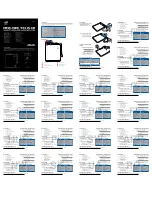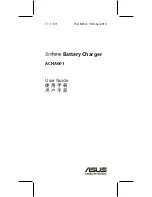
KC-P30 Charging Station
Calibrating the device
V1.03
34
© KEBA
●
Take the signed measurement data records from the auxiliary device of
the charging station and check the signature using the transparency and
display software.
●
During the charging process, the progressing kWh display is shown on
the display of the calibration law-compliant charging station.
●
The measurement deviation of the charging station must not exceed the
value specified by DIN EN 50470-3 for class A meters.
6.2.3
Billing control
To perform the billing control, proceed as follows:
1) Obtain the data record consisting of multiple data packets with signa-
tures from the charging station. The EMSP provides this data record to
the customer over their portal along with the bill. For additional informa-
tion, see
4.4 Remote transmission of data records
.
2) Take the signed data packets from the EMSP software.
3) Check the signature using the transparency and display software, see
5.4 Verification of measurement data using the transparency and display
software
6.3
Testing in test mode
In order to activate test mode, the seal on the connection panel cover (user
seal) must be removed. This may only be done in consultation with the oper-
ator.
6.3.1
Test mode
In test mode, the charging station behaves as follows:
●
The contactor is switched on for 3 hours to allow power transmission for
test purposes.
●
The CP "Control Pilot" communication cable is fixed at 12 V to prevent a
vehicle from charging. The power must be drawn off by means of a spe-
cial load.
●
DC residual current detection is deactivated. This is necessary to enable
a measurement despite poor synchronization of the current sources of
the test device (≥ 6 mA direct current).
●
Monitoring of the contactor function (weld detection and read-back con-
tact) is deactivated. This is necessary due to the special behavior of the
energy source in the test device.
●
The pulse LED (see
) flashes with 10.000 light pulses per
transmitted kilowatt hour. With a special testing device, the energy trans-
mitted by the charging station can be compared with the light pulses of
the pulse LED. This comparison allows conclusions to be drawn about
the accuracy of the energy detection and energy display.







































